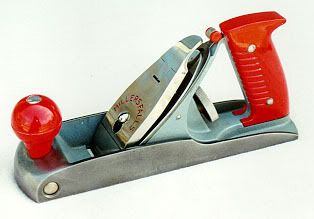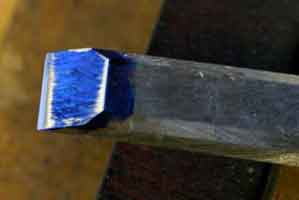|
|
Coooo
Nov 24, 2008 12:12:40 GMT
Post by nickw on Nov 24, 2008 12:12:40 GMT
|
|
|
|
Coooo
Nov 24, 2008 12:29:28 GMT
Post by bugbear on Nov 24, 2008 12:29:28 GMT
It's too expensive and too shiny, and only for amateurs who prefer tools to woodworking. BugBear (saving Jacob some time) |
|
|
|
Coooo
Nov 24, 2008 12:32:49 GMT
Post by mrgrimsdale on Nov 24, 2008 12:32:49 GMT
It's too expensive and too shiny, and only for amateurs who prefer tools to woodworking. BugBear (saving Jacob some time) ;D ;D ;D How much does it weigh? (Just trying to take an interest) |
|
|
|
Coooo
Nov 24, 2008 12:47:21 GMT
Post by cnc paul on Nov 24, 2008 12:47:21 GMT
Yes very nice, Yes I would like one, do I need one .......How much !!!!!
I think the days have gone where a product is priced on Labour + materials + overheads....... more like what can we get away with.
|
|
|
|
Coooo
Nov 24, 2008 13:09:49 GMT
Post by mrgrimsdale on Nov 24, 2008 13:09:49 GMT
No, seriously, I want to know how much it weighs.
My Stanley 220 weighs 600 grams. An otherwise almost identical later Stanley with no number, weighs 800. The 200 difference makes it much less nice to use. I use the 220 a lot, one handed, and the light weight is important.
If this new planes weigh much more than 600 g they would have a major disadvantage as far as I would be concerned - if I ever got my hands on one which is very unlikely ;D
|
|
|
|
Coooo
Nov 24, 2008 14:21:10 GMT
Post by modernist on Nov 24, 2008 14:21:10 GMT
Even as a self confessed tool enthusiast I think that is OTT. I agree weight is important. My LN 140 is too big and heavy to be ideal but I am not so sure these new planes will be. It's a pity if we start to get style and fashion into hand tools and these look a bit Captain Kirk to me.
I bet you can buy a "black velvet draw-sting bag" for yours Jacob.
Cheers
Brian
|
|
smudger
Full Member
   Hmm. Chimped it up again.
Hmm. Chimped it up again.
Posts: 183
|
Coooo
Nov 24, 2008 14:39:10 GMT
Post by smudger on Nov 24, 2008 14:39:10 GMT
Millers Falls never made any Buck Rogers block planes, so these fill a niche in the market.  But if they had, they would have looked like this:  |
|
|
|
Coooo
Nov 24, 2008 14:48:02 GMT
Post by mrgrimsdale on Nov 24, 2008 14:48:02 GMT
I bet you can buy a "black velvet draw-sting bag" for yours Jacob. Cheers Brian I believe mrs G is knitting me something along those lines  |
|
smudger
Full Member
   Hmm. Chimped it up again.
Hmm. Chimped it up again.
Posts: 183
|
Coooo
Nov 24, 2008 15:24:43 GMT
Post by smudger on Nov 24, 2008 15:24:43 GMT
No, seriously, I want to know how much it weighs. My Stanley 220 weighs 600 grams. An otherwise almost identical later Stanley with no number, weighs 800. The 200 difference makes it much less nice to use. I use the 220 a lot, one handed, and the light weight is important. If this new planes weigh much more than 600 g they would have a major disadvantage as far as I would be concerned - if I ever got my hands on one which is very unlikely ;D Derek Cohen gives the weight as 790gms. |
|
|
|
Coooo
Nov 24, 2008 15:46:23 GMT
Post by bugbear on Nov 24, 2008 15:46:23 GMT
Millers Falls never made any Buck Rogers block planes, so these fill a niche in the market. But if they had, they would have looked like this:  Those aren't tools, those are cylons - and they have a plan! BugBear |
|
|
|
Coooo
Nov 24, 2008 16:01:10 GMT
Post by Alf on Nov 24, 2008 16:01:10 GMT
I made them 795g - post office scales, fwiw. No good to Jacob though; not a smidgeon of brass on 'em. Some mutterings vis-a-vis here, if you're desperate. |
|
smudger
Full Member
   Hmm. Chimped it up again.
Hmm. Chimped it up again.
Posts: 183
|
Coooo
Nov 24, 2008 16:07:29 GMT
Post by smudger on Nov 24, 2008 16:07:29 GMT
Millers Falls never made any Buck Rogers block planes, so these fill a niche in the market. But if they had, they would have looked like this:  Those aren't tools, those are cylons - and they have a plan! BugBear It's just occurred to me that they would make a welcome alternative to Flying Ducks as a wall ornament. |
|
|
|
Coooo
Nov 24, 2008 16:25:43 GMT
Post by Rob Lee on Nov 24, 2008 16:25:43 GMT
Those aren't tools, those are cylons - and they have a plan! BugBear Now that's funny...one of my favorite shows too! Cheers - Rob |
|
|
|
Coooo
Nov 24, 2008 16:31:05 GMT
Post by Rob Lee on Nov 24, 2008 16:31:05 GMT
Yes very nice, Yes I would like one, do I need one .......How much !!!!! I think the days have gone where a product is priced on Labour + materials + overheads....... more like what can we get away with. Hi Paul - We actually make proportionally more on the $179 plane, than we do on the $279 plane! The high nickel content really pumps up the casting cost - not to mention the polishing, and running the mills at half speed. To give you an idea.... the cost for raw casting for a jack-size plane (the only cost I can remember - not necessarily the next plane!) is $134 .... Quite a bit more - before binning even one for a defect....! Cheers - Rob |
|
|
|
Coooo
Nov 24, 2008 16:33:24 GMT
Post by paulchapman on Nov 24, 2008 16:33:24 GMT
My Stanley 220 weighs 600 grams. An otherwise almost identical later Stanley with no number, weighs 800. The 200 difference makes it much less nice to use. I use the 220 a lot, one handed, and the light weight is important. Suppose it depends on what you are doing but, where planes are concerned, I invariably find that heavy is good - particularly on very hard wood or wood with difficult grain. Cheers  Paul |
|
|
|
Coooo
Nov 24, 2008 16:58:35 GMT
Post by cnc paul on Nov 24, 2008 16:58:35 GMT
Yes very nice, Yes I would like one, do I need one .......How much !!!!! I think the days have gone where a product is priced on Labour + materials + overheads....... more like what can we get away with. Hi Paul - We actually make proportionally more on the $179 plane, than we do on the $279 plane! The high nickel content really pumps up the casting cost - not to mention the polishing, and running the mills at half speed. To give you an idea.... the cost for raw casting for a jack-size plane (the only cost I can remember - not necessarily the next plane!) is $134 .... Quite a bit more - before binning even one for a defect....! Cheers - Rob Hi Rob, Thanks for the heads up on production costs. I am glutton for beautiful engineered and tactile things, I have one of your Limited edition s/s edge planes, but I still think it is a lot of money for a block plane. Paul Paul |
|
|
|
Coooo
Nov 24, 2008 17:04:49 GMT
Post by dom on Nov 24, 2008 17:04:49 GMT
Don't think Mr Lee and Co. are aiming for the site market or the pro for that matter, but it is a beautiful looking tool and if what Alf says about it is true, and I trust her judgement, then it's a god buy for the serious hobbyist.
|
|
|
|
Coooo
Nov 24, 2008 19:22:55 GMT
Post by paulchapman on Nov 24, 2008 19:22:55 GMT
if what Alf says about it is true, and I trust her judgement Agreed - Alf's reviews are always spot on. Cheers  Paul |
|
|
|
Coooo
Nov 24, 2008 19:34:25 GMT
Post by mrgrimsdale on Nov 24, 2008 19:34:25 GMT
My Stanley 220 weighs 600 grams. An otherwise almost identical later Stanley with no number, weighs 800. The 200 difference makes it much less nice to use. I use the 220 a lot, one handed, and the light weight is important. Suppose it depends on what you are doing but, where planes are concerned, I invariably find that heavy is good - particularly on very hard wood or wood with difficult grain. Cheers  Paul Agree for most except a block plane. I use mine a lot for shaping board edges (scribing profile, half round, or bevel etc) and finishing board ends sometimes. One handed. Not that the weight makes an enormous difference but I definitely prefer the old 220 to the heavier new version. |
|
|
|
Coooo
Nov 24, 2008 19:53:20 GMT
Post by Lord Nibbo on Nov 24, 2008 19:53:20 GMT
Those aren't tools, those are cylons - and they have a plan! BugBear Did someone call me?  |
|
|
|
Coooo
Nov 24, 2008 20:11:15 GMT
Post by Alf on Nov 24, 2008 20:11:15 GMT
...it's a god buy for the serious hobbyist. There ya go, Rob - block plane of the gods. ;D Sorry, Dom; couldn't resist. Should have though, given your and Paul's touching faith in my whitterings. Thank you muchly; it's most appreciated. |
|
|
|
Coooo
Nov 24, 2008 20:49:15 GMT
Post by mrgrimsdale on Nov 24, 2008 20:49:15 GMT
This from Alf's review: It comes with two bevel angles; the so-called primary at 25° and a "relief bevel" of 23° to "reduce the amount of metal that needs to be removed when resharpening the blade."Sounds like a tentative step towards a convex bevel. Three bevels here. Slip in a 24 and a 26 and you are just about there. It's only a matter of time - everybody will be doing it. Mark my words. ;D Here's a snap of a 3 bevel chisel (sorry crap photo) from my web page. You get 3 bevels when you start freehand convex bevel sharpening. These will be about 30,25(blue) and 20 degrees. Eventually they join up into a continuous convex bevel.  |
|
|
|
Coooo
Nov 25, 2008 10:28:27 GMT
Post by dom on Nov 25, 2008 10:28:27 GMT
Pedanism Rules K.O. ;D
|
|
|
|
Coooo
Nov 25, 2008 10:48:19 GMT
Post by paulchapman on Nov 25, 2008 10:48:19 GMT
I think I preferred the look of Jacob before he had the tattoo removed ;D
|
|
|
|
Coooo
Nov 27, 2008 23:37:08 GMT
Post by mrgrimsdale on Nov 27, 2008 23:37:08 GMT
Have to be pedantic it's the only language they understand ;D I've got more in common with Larry here |
|